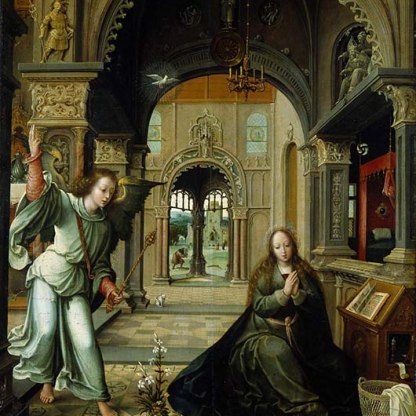The Convalescent

In fifty years' time I shall be known as the brother of Gwen John.
Augustus John
While Augustus John’s flattering prediction about his older sister has not entirely come to pass – he is still appreciated as an important twentieth-century British painter in his own right – it is true that Gwen’s reputation has grown enormously since her death. Her quiet, low-key studies of women in rooms enjoy a considerably wider and more appreciative audience than they did in her own day. There was only ever one exhibition of her work in her lifetime, in 1926. And while Augustus became a notorious figure in the Bohemian circles of 1920s London, Gwen lived a less conspicuous life on the outskirts of Paris, a willing exile from her own country.
Her reputation as a recluse has been questioned recently, but it is an easy one to accept when looking at The Convalescent. This is one of ten very similar paintings which show the same girl sitting in a room suffused with soft, pale light. There is an atmosphere of serene, if melancholy, self-absorption: one is struck by the serious expression on the girl’s face, her downcast eyes, the earnestness with which she regards the letter in her hands. There is a sense that perhaps she is not reading it for the first time, that she is simply staring at it, reflecting solemnly upon its contents. Her sloping shoulders, her pale skin, her slender frame, which scarcely fills the seat of the chair, speak of the vulnerability suggested by the title.
Gwen John first painted a version of this in 1919 for her friend, the American artist Isabel Bowser, for whom she herself had modelled. In a letter to another friend from the time she explains:
I will finish the little painting. It is called The Convalescent. I was going to say to Isabel, 'It doesn’t matter about the title does it, Isabel? No doubt she was cured by Christian Science.’ That was a sort of joke.
The joke was an affectionate one at the expense of Bowser who had embraced Christian Science, a relatively new religion established by Mary Baker Eddy in 1879. Eddy stressed reliance upon spiritual healing, and her followers refused conventional medical treatments. But Gwen’s joke fell tragically flat: in October 1919, before ‘the little painting’ was even finished, Bowser died of cancer, having put herself into the hands of Christian Scientist healers. Gwen was devastated. It was the second death of a close friend in two years, for in November 1917 the great French sculptor Auguste Rodin, with whom Gwen was deeply in love, had died after a stroke.
The two deaths doubtless affected the artist, and may have informed the mood of her work. But the word 'convalescent' means one who is growing in strength, who is emerging from an illness, and in this respect there is a sense of hope within the painting – subdued like the colours, but present nonetheless. A reflection perhaps of the feeling that France, indeed Europe in general, was emerging from the darkness that had engulfed it during the Great War.
Themes and periods
Data from our collections database
Captain Peto; Eardley Knolleys, who sold it to Roland, Browse & Delbanco, London, 1950; bt. from them by the Very Rev. E. Milner-White, 1951
Acquisition and important dates
- Method of acquisition: Given
- Dates: 1951
Dating
Maker(s)
- John, Gwen Painter
Materials used in production
Read more about this recordStories, Contexts and Themes
Other highlight objects you might like
Suggested Curating Cambridge products
Sign up to our emails
Be the first to hear about our news, exhibitions, events and more…






